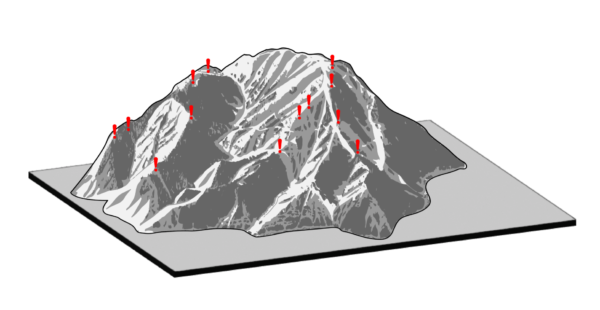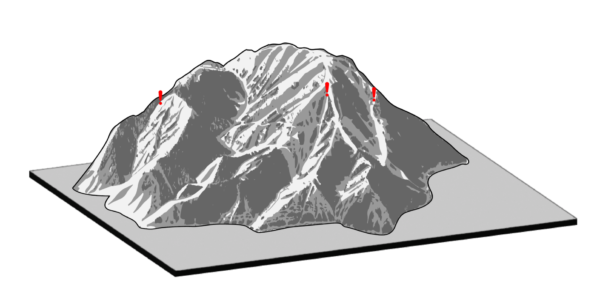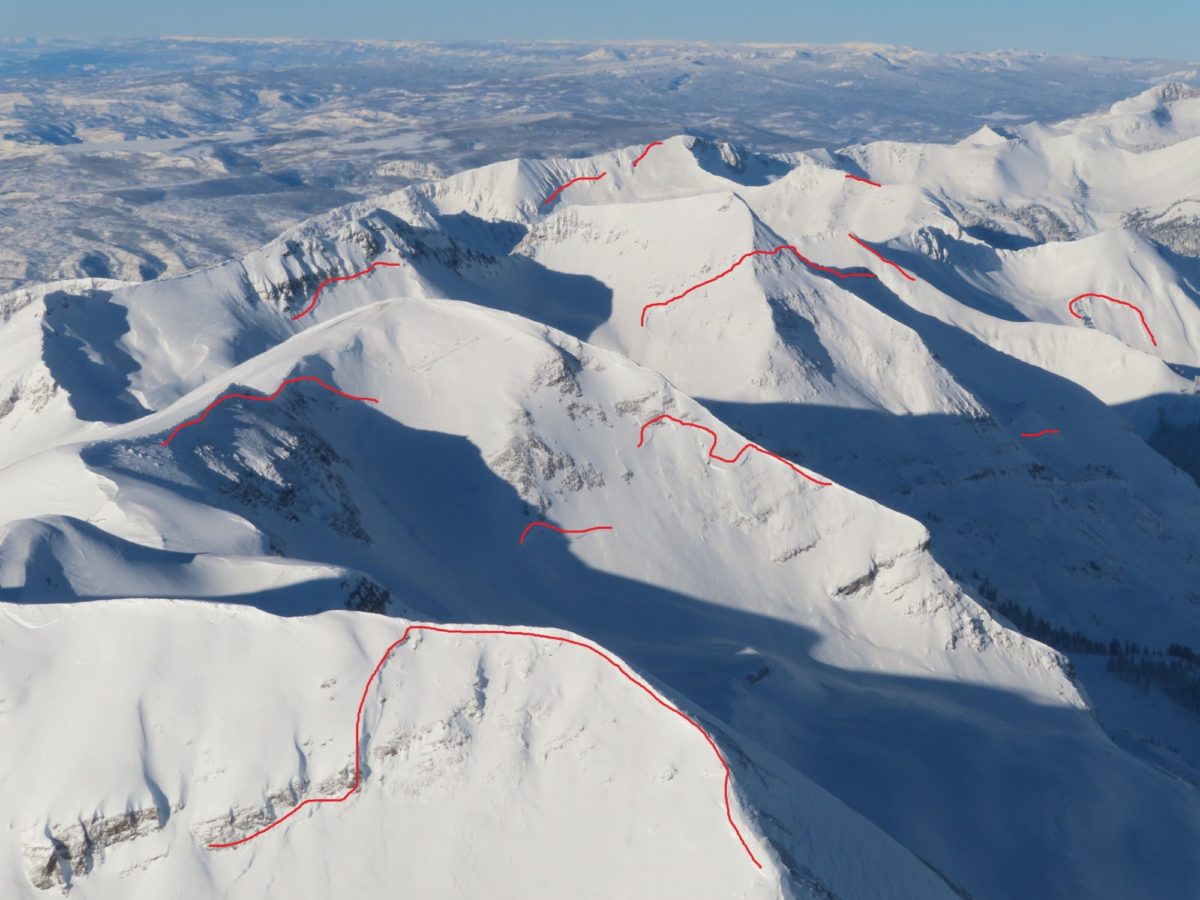How difficult or easy it is to encounter an avalanche problem across the terrain, and where in the terrain the problem is found.
Distribution is a measure of the spatial density of instabilities in the snowpack. It can also describe the pattern or location of avalanche problems throughout the terrain with regard to aspect, elevation, region, or types of terrain features. For example, a problem’s distribution could be specific to above treeline, leeward aspects, as shown in the photo above.
Widespread: The avalanche problem is easy to find.

Widespread distribution means that the avalanche problem is found in many locations and terrain features. Evidence of the problem is everywhere and easy to find.
Specific: The avalanche problem can be found in certain areas if you have a sense of where it exists.

Specific distribution means that the avalanche problem exists in terrain features with common characteristics. Evidence of the problem exists but is not always obvious. Instabilities in this graphic are specific to a certain aspect.
Isolated: The avalanche problem is difficult to find.

Isolated distribution means that the avalanche problem is spotty and found in only a few terrain features. Evidence of the problem is rare and hard to find.

